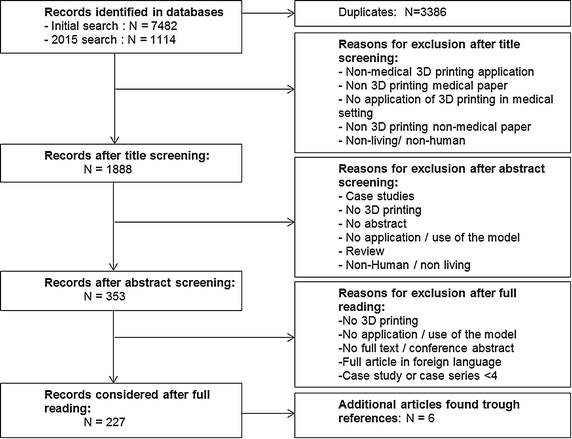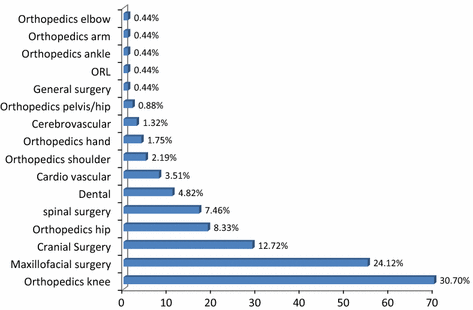3D-printing techniques in a medical setting: a systematic literature review
- PMID: 27769304
- PMCID: PMC5073919
- DOI: 10.1186/s12938-016-0236-4
3D-printing techniques in a medical setting: a systematic literature review
Abstract
Background: Three-dimensional (3D) printing has numerous applications and has gained much interest in the medical world. The constantly improving quality of 3D-printing applications has contributed to their increased use on patients. This paper summarizes the literature on surgical 3D-printing applications used on patients, with a focus on reported clinical and economic outcomes.
Methods: Three major literature databases were screened for case series (more than three cases described in the same study) and trials of surgical applications of 3D printing in humans.
Results: 227 surgical papers were analyzed and summarized using an evidence table. The papers described the use of 3D printing for surgical guides, anatomical models, and custom implants. 3D printing is used in multiple surgical domains, such as orthopedics, maxillofacial surgery, cranial surgery, and spinal surgery. In general, the advantages of 3D-printed parts are said to include reduced surgical time, improved medical outcome, and decreased radiation exposure. The costs of printing and additional scans generally increase the overall cost of the procedure.
Conclusion: 3D printing is well integrated in surgical practice and research. Applications vary from anatomical models mainly intended for surgical planning to surgical guides and implants. Our research suggests that there are several advantages to 3D-printed applications, but that further research is needed to determine whether the increased intervention costs can be balanced with the observable advantages of this new technology. There is a need for a formal cost-effectiveness analysis.
Keywords: 3D printing; Additive manufacturing; Anatomic model; Customized; Innovation; Patient specific; Review; Surgery.
Figures
References
Publication types
MeSH terms
LinkOut - more resources
Full Text Sources
Other Literature Sources
Medical





